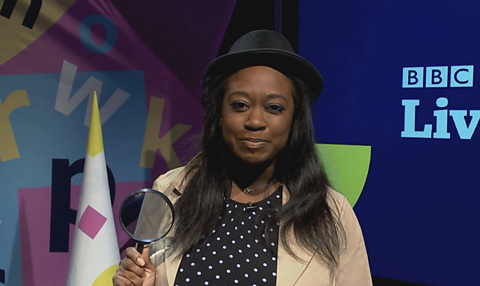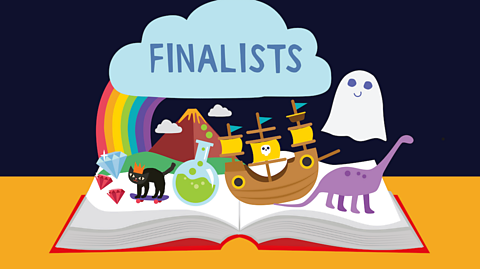A great story has captivating characters and an excellent beginning, middle and ending! Sometimes coming up with the ending can be the most difficult part. Help children crack that great ending and finish with flourish. You can play this animation, which is just one in a writing series, in class or at home.
I was on the school bus the other morning when I had a brilliant idea for my story. I'm not sure how it ends, but I know how it begins.
It was a day like any other day until the bus driver said something very strange: "Next stop, 1963. Hold tight, please." He pulled a big red lever and the bus transformed. Wheels folded and wings unfurled. Gadgets, gizmos and thingumajigs appeared. Engines extended and powered up. Then with a blinding flash and a breathless lurch through inbetween space, we were in 1963! I'd travelled back in time! I decided to visit my grandad, who would now be about my age. I was nearly at his house when I saw a boy playing in the road and a car was speeding towards him.
I dragged him back onto the pavement and the car whooshed by. The boy's name was John. Same as my grandad. He was my grandad! And if I hadn't saved his life, he would never have grown up to have a daughter, my mum, who would never have grown up to have a son, me! I got back on the school bus time machine and with another giddy lurch, I returned to the 2020s.
I like my story, but the ending needs something extra, something to make it a bit more memorable. So maybe I'm stuck in the 1960s and have to grow up with my own grandad as a brother. No, still not quite right. Or maybe I don't save my grandad and I get home to find that I never existed! No, too sad. Or… yes! I returned to my own time and I asked the driver, "Why did you take me back to 1963?" The driver turned round and it was my grandad! As he is now! "I remember that day when you saved my life," he said, "so I had to take you back in my time machine to make sure it happened!" Now that's an ending.
But then, back in the real world, the real bus driver said, "Are you getting off or what?" And that's another great ending!
We have up to five animations to develop children's 500 Words stories, why not use one a day? Coming up next is 'Edit, Improve and Read Aloud'.
Teacher Notes
In the classroom, pupils could be tasked with thinking of an alternative ending for a well-known story.
Also, pupils could be given the ending of a story and they generate the rest, e.g. the setting, character and plot.
For less able pupils’ access 5-7 version.
Curriculum Notes
This video is suitable for use with pupils aged 7-11. It is designed primarily for support with the BBC 500 Words competition but could also support the teaching of English and Literacy for this age range.
This links directly to the English Programmes of Study at KS2 (England and Wales), 2nd Level (Scotland) and KS1/KS2 (Northern Ireland).

Need more inspiration?
Back to 500 Words
Click here for more information on 500 Words.

Literacy Live Lesson 5 - KS2
Ayshah Tull and Mrs Vee look at the book Battle Bunny, learn how to edit text, and look at blackout poetry and graffiti along the way.

The top 50 finalists of 2024/25. audio
Read or listen to the top 50 stories that made it to the 2024/25 final.
